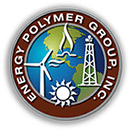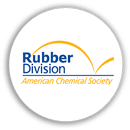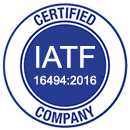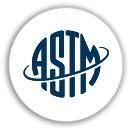ASTM D1076-06: Standard Specification for Rubber – Concentrated Latex
ASTM D1076-06 is a standard specification established by ASTM International that defines the classification, purity, and quality requirements for concentrated natural rubber latex. This standard is essential for ensuring consistency, safety, and performance in latex-based products used across multiple industries, including medical, industrial, and consumer applications.
By following ASTM D1076-06, manufacturers can ensure their latex materials meet strict industry standards, reducing risks of contamination and ensuring reliable product performance.
Purpose and Importance of ASTM D1076-06
The ASTM D1076-06 standard is designed to:
- Classify Natural Rubber Latex based on its chemical composition and application suitability.
- Ensure Latex Purity by setting limits for non-rubber content, protein levels, and microbial contamination.
- Improve Manufacturing Consistency by defining pH levels, total solids, and mechanical stability.
- Support Regulatory Compliance for industries that require high-purity latex, such as medical and food-grade applications.
- Enhance Product Performance by specifying physical and chemical requirements for latex used in rubber products.
Classification of Latex in ASTM D1076-06
ASTM D1076-06 classifies concentrated natural rubber latex into three main types based on their processing methods and properties:
-
Type 1: Ammonia-Preserved Latex
- Contains high levels of ammonia (0.6% or more) to prevent bacterial growth.
- Commonly used in industrial rubber production and dipped goods.
-
Type 2: Low-Ammonia Latex
- Contains 0.3% to 0.6% ammonia with additional preservatives to maintain stability.
- Often used for medical gloves, balloons, and adhesives.
-
Type 3: High-Ammonia, Low-Nitrosamine Latex
- Specially formulated to reduce nitrosamine formation, a potential carcinogen.
- Used in applications where safety and low toxicity are critical.
Key Test Requirements in ASTM D1076-06
To comply with ASTM D1076-06, natural rubber latex must pass various physical, chemical, and microbiological tests. The primary testing requirements include:
1. Total Solids Content
- Measures the percentage of rubber solids in latex to ensure consistent product formulation.
- Affects viscosity, drying time, and film formation in latex-based products.
2. Alkalinity (Ammonia Content)
- Ensures latex stability by controlling ammonia levels to prevent bacterial degradation.
- High ammonia is necessary for long storage life, while low-ammonia latex requires additional preservatives.
3. Mechanical Stability
- Determines latex resistance to coagulation when subjected to mechanical stress.
- Essential for latex used in dipped products, such as gloves and condoms.
4. Coagulum Content
- Measures undissolved particles in latex to ensure smooth processing and product uniformity.
- Helps in preventing clogging in production equipment.
5. Microbiological Contamination
- Tests for bacteria and mold levels to ensure latex purity and safety.
- Critical for medical and food-grade latex applications.
6. Protein Content
- Measures water-extractable proteins, which can cause latex allergies.
- Low-protein latex is preferred for medical gloves, catheters, and healthcare products.
How ASTM D1076-06 Affects Rubber and Plastic Products
1. Impact on Rubber Manufacturing
- Ensures latex consistency and purity for use in rubber gloves, adhesives, and coatings.
- Reduces clumping and processing issues in dipped latex products.
- Enhances elasticity and durability of rubber-based goods.
2. Impact on Plastic and Composite Materials
- Used as a bonding agent for plastics and textiles in coated fabrics and laminates.
- Helps in producing latex-modified plastics with improved flexibility and toughness.
- Prevents microbial contamination in latex coatings used in plastic packaging.
Applications of ASTM D1076-06 in Different Industries
ASTM D1076-06 is widely used in industries where high-quality latex is required:
- Medical Industry: Used for surgical gloves, catheters, tubing, and dental dams.
- Industrial Manufacturing: Found in rubber seals, gaskets, adhesives, and protective coatings.
- Consumer Goods: Used in balloons, mattresses, toys, and sporting goods.
- Food and Beverage Packaging: Ensures latex coatings used in bottle caps and food packaging meet safety standards.
Benefits of ASTM D1076-06 Compliance
- Ensures Product Safety by setting strict limits on microbial contamination and protein content.
- Enhances Material Performance by defining latex viscosity, stability, and total solids content.
- Reduces Allergic Reactions by lowering water-extractable protein levels in medical and consumer latex products.
- Supports Regulatory Approval for FDA and international health standards in medical and food-grade applications.
- Improves Manufacturing Efficiency by reducing coagulum formation, clogging, and equipment downtime.
Challenges in ASTM D1076-06 Testing and Compliance
- Storage and Handling Sensitivity: Latex requires careful temperature control to prevent coagulation and microbial growth.
- Variability in Natural Sources: Latex quality depends on geographical factors, tree age, and processing methods.
- Protein Allergies: Despite low-protein formulations, latex allergies remain a concern in medical applications.
- Additional Preservatives: Low-ammonia latex formulations require alternative stabilizers, increasing formulation complexity.
Industries Benefiting from ASTM D1076-06
Several industries rely on ASTM D1076-06 to ensure the quality and safety of latex materials:
- Healthcare & Medical Devices: Surgical gloves, examination gloves, tubing, and dental products.
- Industrial Rubber Manufacturing: Gaskets, adhesives, rubberized coatings, and protective equipment.
- Consumer Goods: Latex balloons, footwear, sporting goods, and mattress foams.
- Food & Beverage Packaging: Latex coatings for food containers and beverage bottle seals.








